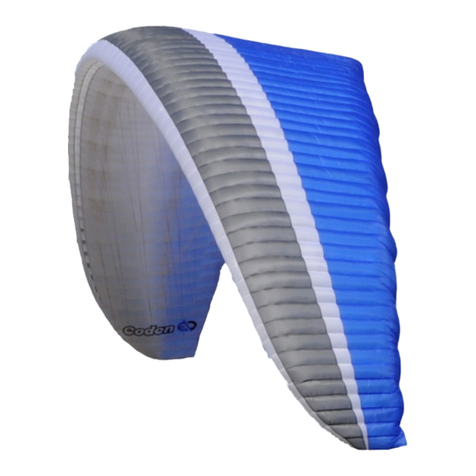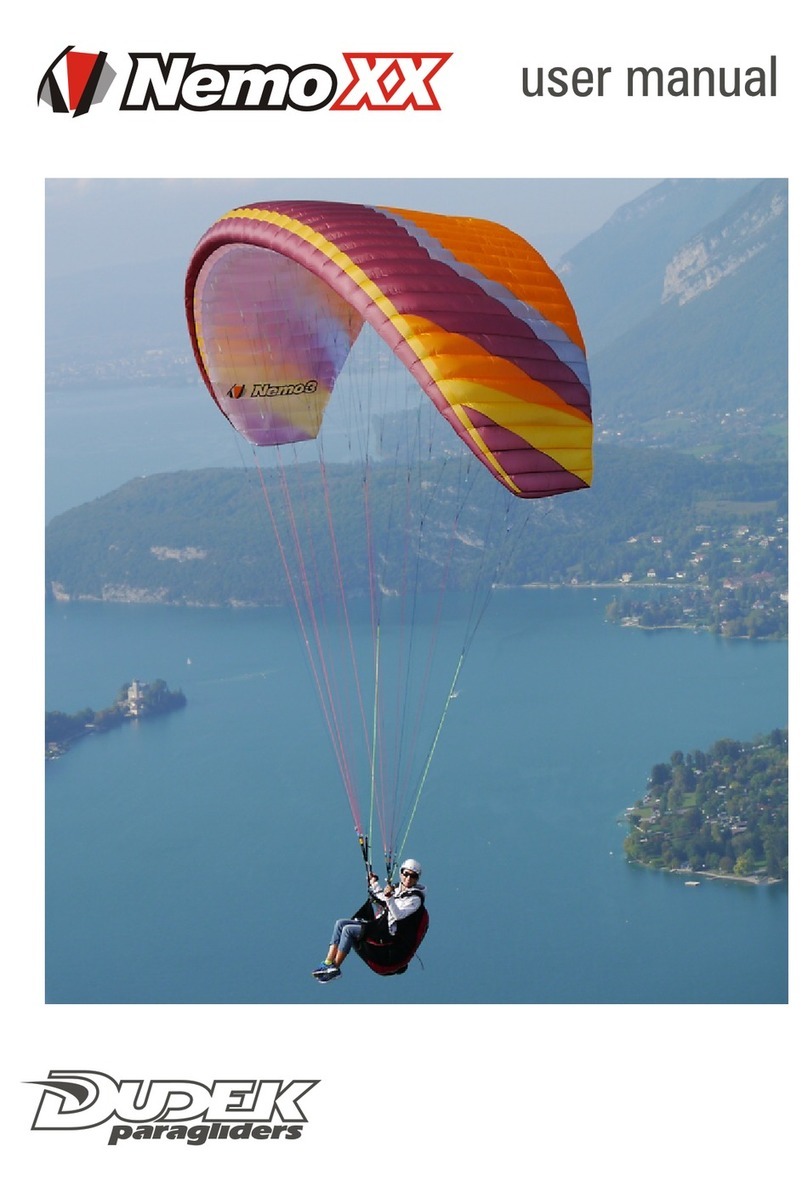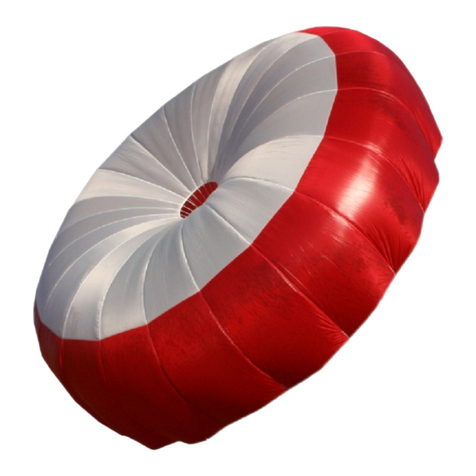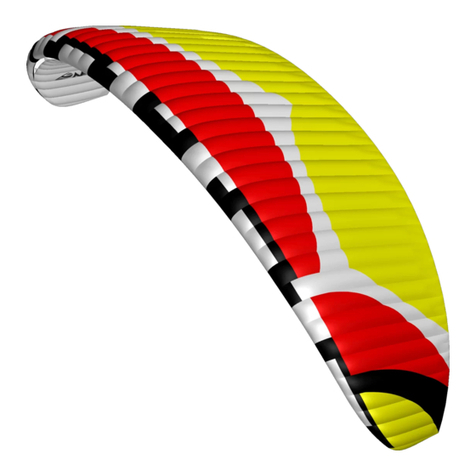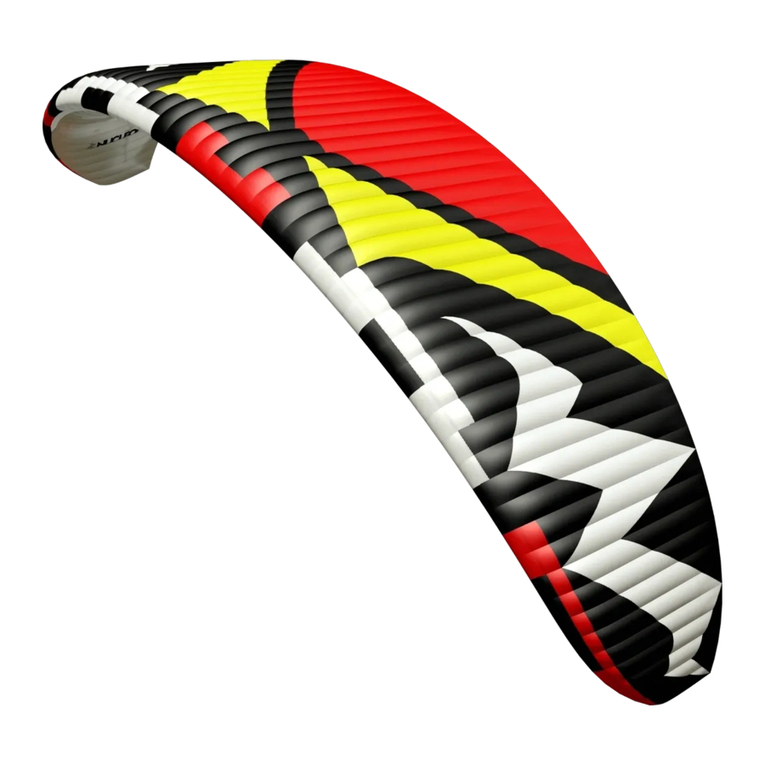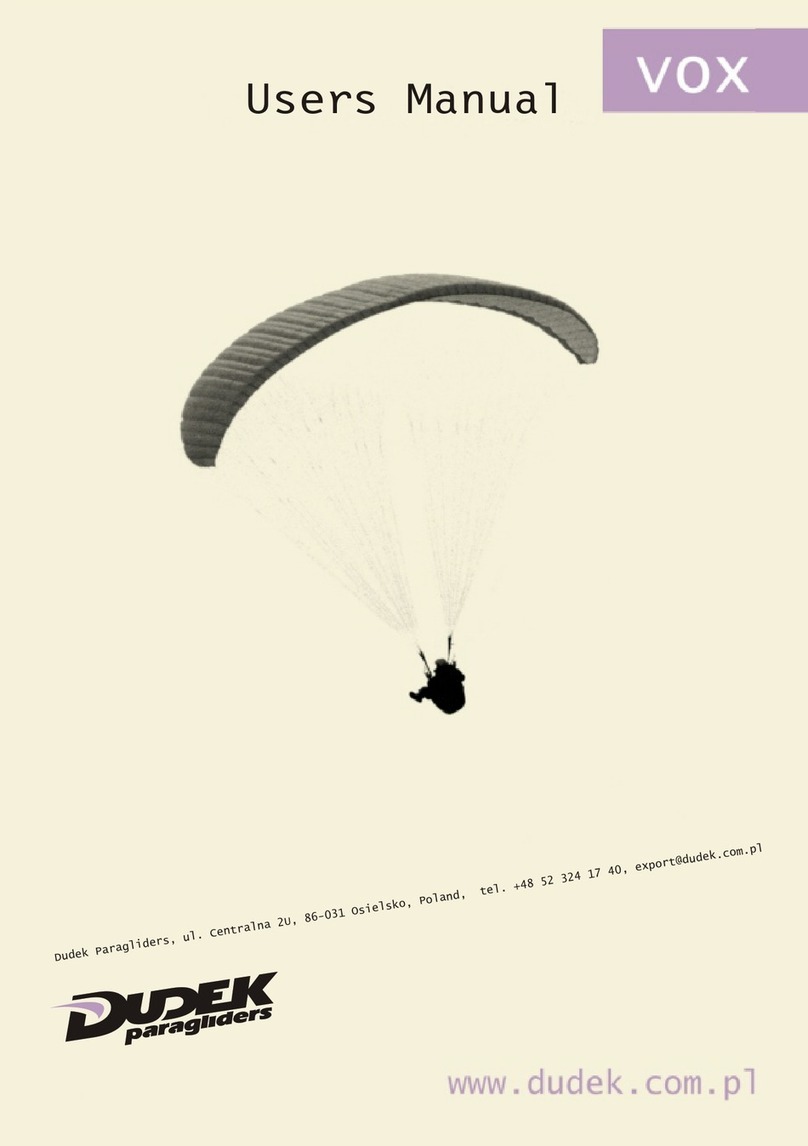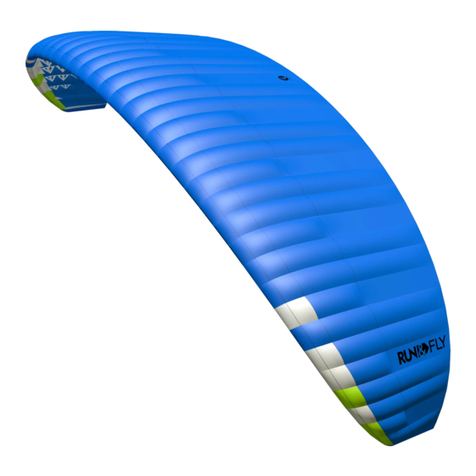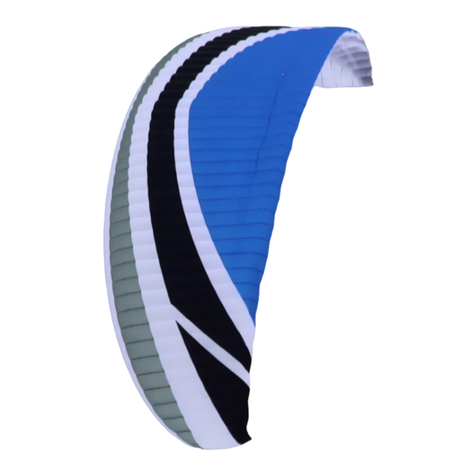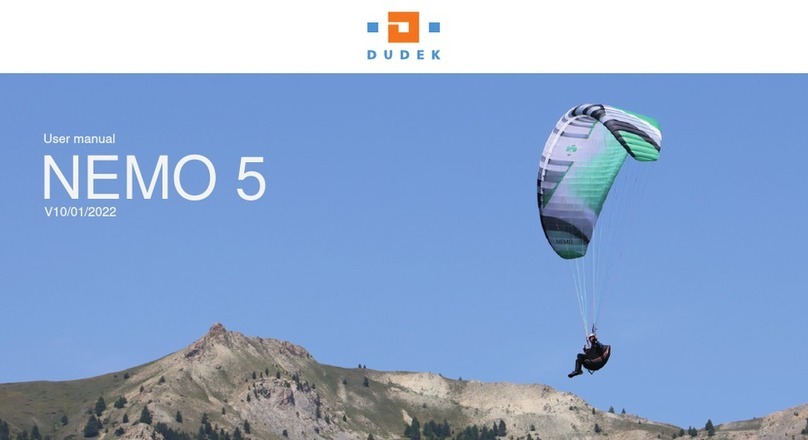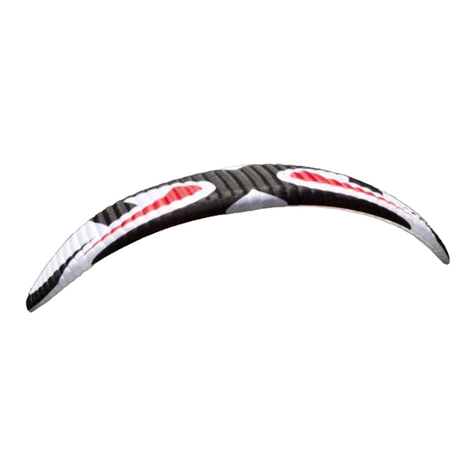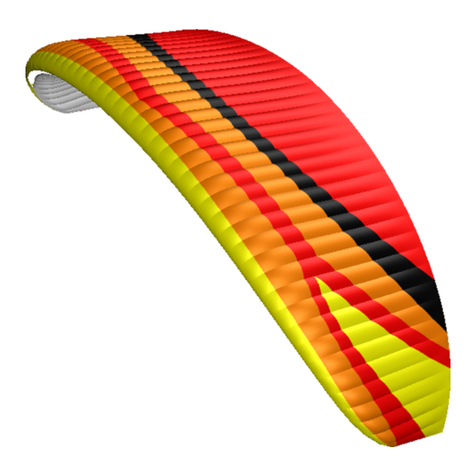
aerofoil reproduction across the entire wingspan and yet more importantly,
minimal number of suspension points.
The lower surface has a RSS (Reinforcing Strap System)
applied in the wing’s interior. RSS is an ballooning-
independent reinforcements system, made entirely of
paragliding fabric, stiffening and stabilizing entire canopy
structure.
Nucleon’ aerofoil is another product of our DRA (Dudek
Reflex Airfoil) technology. It was calculated with our
previous experiences in mind and thoroughly tested with
numerical methods.
Properties of a reflex airfoil were described above. The
suspension points areas are additionally reinforced with laminated fabric so
that loads are equally distributed on three planes: vertically (through the
ribs), diagonally through VSS system and level through the RSS.
All crossports have been prepared using OCD (Optimised Crossports
Design) technology. Carefully designed shapes of the openings and their
optimal placement between stress lines guarantee very efficient pressure
distribution in the canopy and its quick inflation. These openings are scaled
together with the ribs, so that their replicability is flawless and they do not
disturb the aerofoil in any way.
Another feature of the Nucleon WRC Cabrio is the Flexi-Egde technology.
The leading edge is closed to the airflow, and its precise shape is kept with
laminated cloth reinforcements, incorporating synthetic rods. The rods make
the leading edge stiffer and smoother, bringing improvements in many areas
- from easier inflation, through stiffening the canopy in flight to improved
general airflow.
Cell openings are positioned on the undersurface in the vicinity of the
leading edge. Their exact placement was very carefully selected, so that
they got maximum ram effect in as many flight situations as possible.
On the wingtips we placed the ACS (Auto Cleaning Slots) - dedicated slots
automatically removing dirt from inside the wing.
Careful selection of modern fabrics and design solutions brings about great
strength and durability of the Nucleon. All materials used come from marked
production batches, and each production step can be verified down to
identification of specific worker and controller.
Nucleon Cabrio WRC is manufactured under new technology, utilizing
precision of the laser cutter. All stages of production process take place in
Poland under strict supervision of the designer himself, thus ensuring
highest European quality.
6
